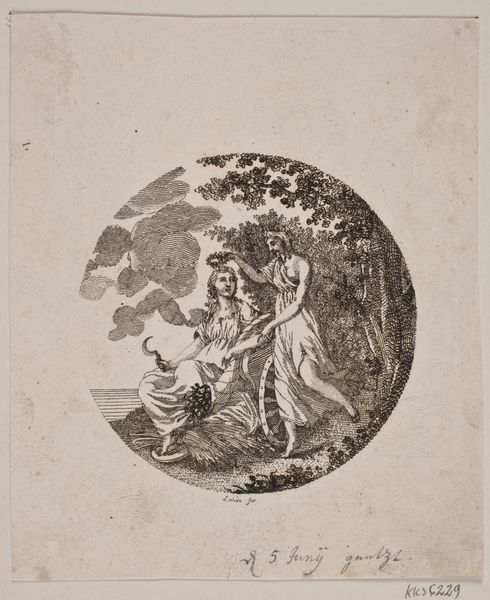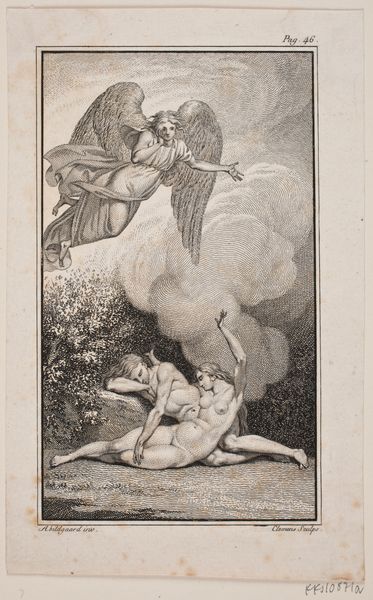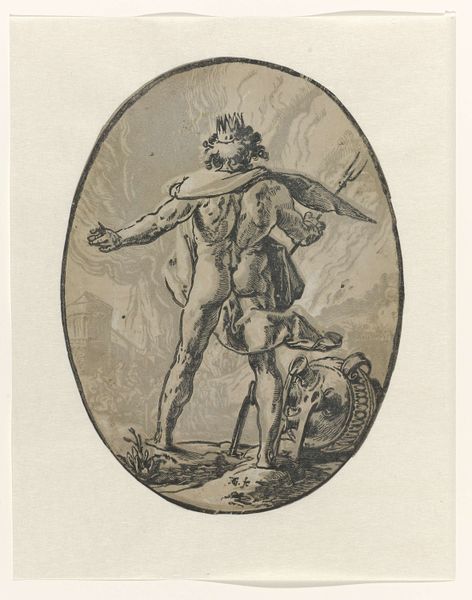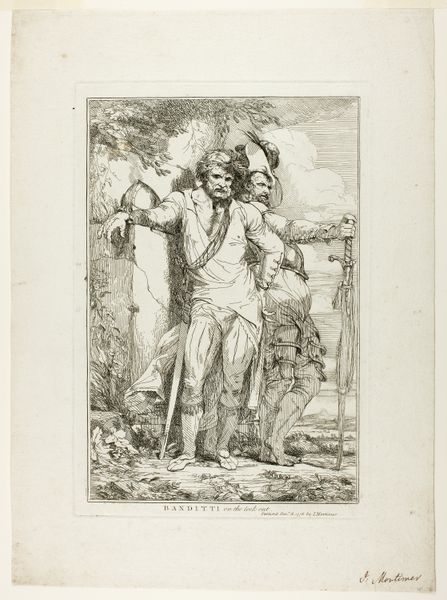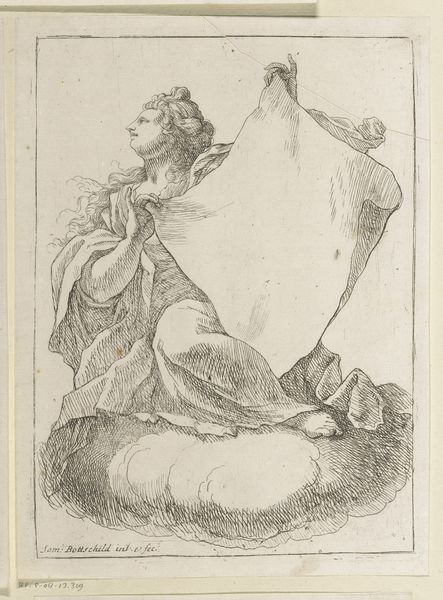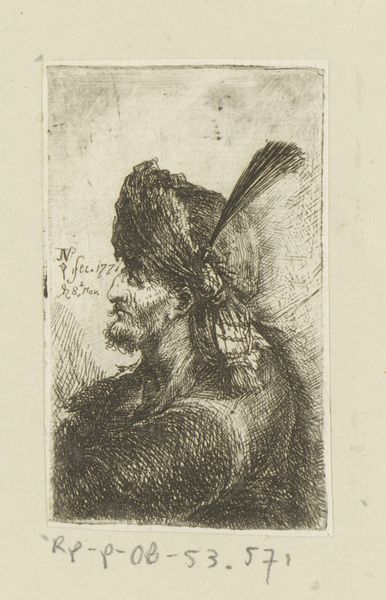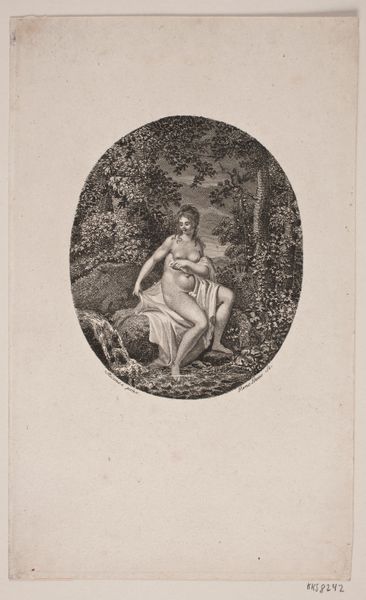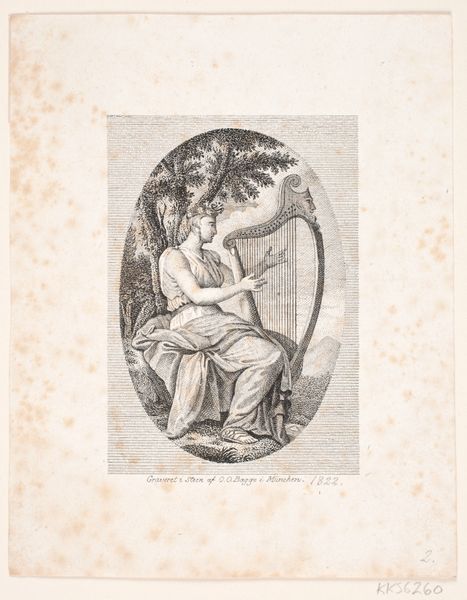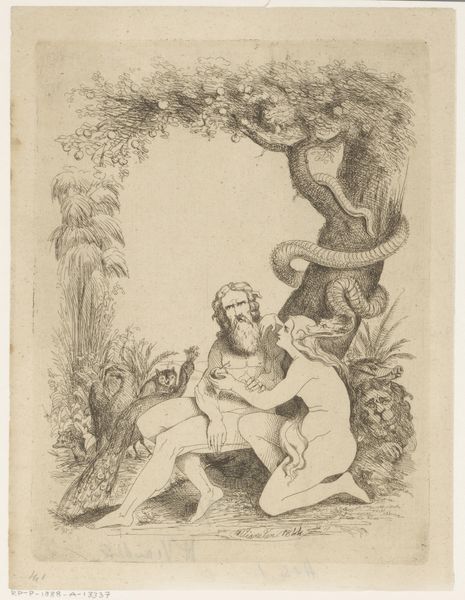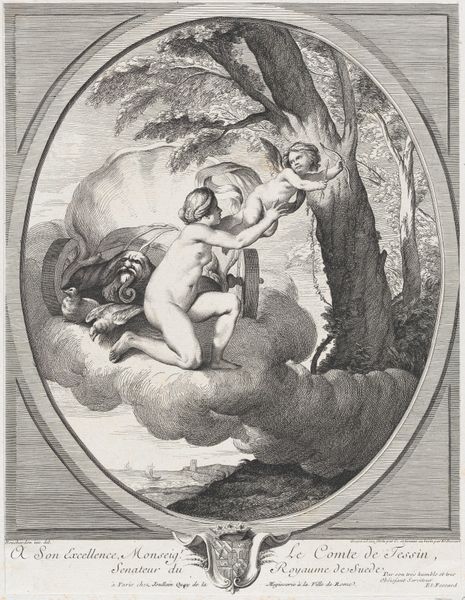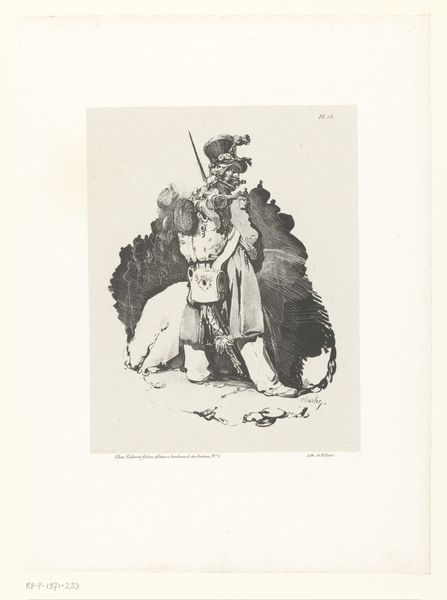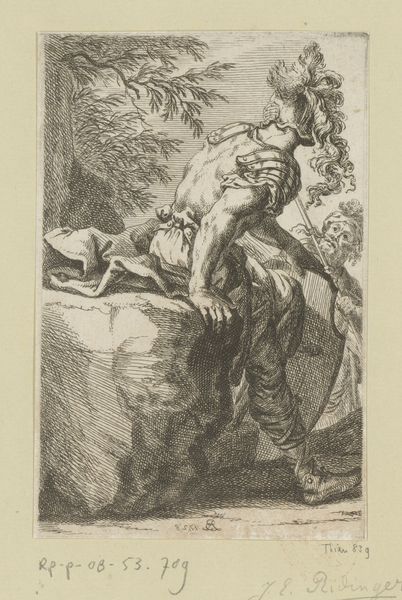
Edgar (from "Twelve Characters from Shakespeare") 1775
0:00
0:00
drawing, print, engraving
#
portrait
#
drawing
# print
#
men
#
line
#
portrait drawing
#
history-painting
#
academic-art
#
engraving
Dimensions: Plate: 15 9/16 x 12 13/16 in. (39.6 x 32.6 cm) Sheet: 20 3/8 x 13 9/16 in. (51.8 x 34.4 cm)
Copyright: Public Domain
Curator: Immediately, I’m struck by the starkness of the image, a raw vulnerability. Editor: Indeed. What we're observing is John Hamilton Mortimer’s 1775 engraving, "Edgar (from 'Twelve Characters from Shakespeare')". Currently residing at the Metropolitan Museum of Art, it’s one of a series exploring characters from Shakespeare’s plays. Mortimer worked primarily with drawings and prints; engravings like these were widely circulated, expanding access to art and, of course, Shakespeare. Curator: And that accessibility shaped its impact. It speaks to the era's understanding of theatrical performance and character – particularly for Edgar’s character within the context of King Lear. Notice the ragged edges, the almost frantic energy of the lines, a sharp contrast created using a rather industrial process. How do you see it formally? Editor: The oval composition, combined with the sharp contrasts, directs the viewer's eye right to the face. The figure, nearly nude, framed by wheat and foliage, is intensely focused. The balance of light and shadow gives volume to his body and suggests movement. He’s off-center and the angle forces the viewer to consider not only his portrait but the story implied beyond the edge of the frame. Curator: Absolutely, and I’m wondering how Mortimer's choices reflect the labor practices of his time. Engraving, although reproducible, was painstaking work, relying on skilled craftsmanship. There's an interesting tension here between the mass production potential of prints and the highly individualistic interpretation of Shakespeare that Mortimer offers. We often view engravings from this period as “replicas", yet consider their contribution to disseminating classical arts to a wider audience. Editor: Good point. The textural details in the hair and clothing contrast sharply with the smoother skin, enhancing the emotional intensity and drawing attention to his expression. Note how he stares; that raw, disquieting gaze suggests profound psychological turmoil. Mortimer captures not just a likeness, but the very essence of Edgar's descent into madness. Curator: The verse below it anchors the work in its literary context, deepening its socio-cultural roots, and allowing a peek into what an audience would respond to at that moment in history. Editor: An insightful piece that offers both technical precision and great interpretative skill, which in turn, allows a glimpse into the human condition and all of its flaws. Curator: Precisely, and in observing Edgar, we're reminded that even the most vulnerable can find a path through even the bleakest of circumstances.
Comments
No comments
Be the first to comment and join the conversation on the ultimate creative platform.
